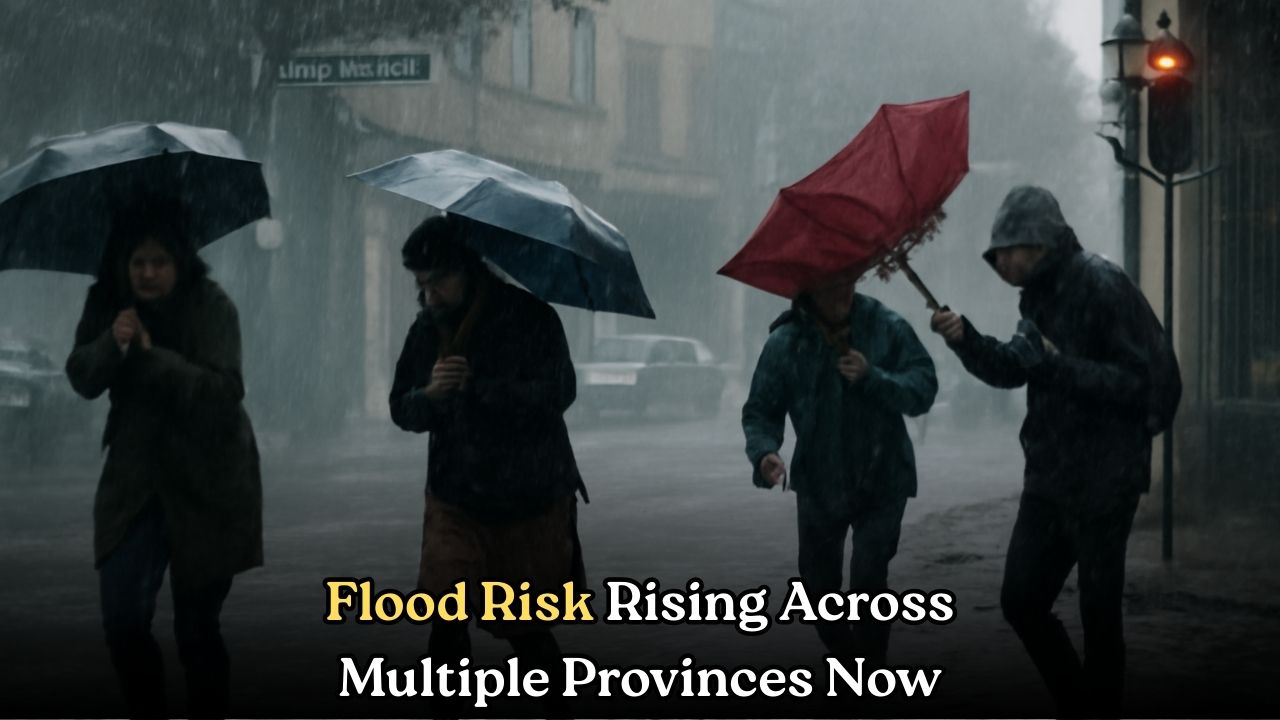
South Africa is facing a significant weather alert for September 2025, with heavy rain, strong winds, and widespread flood risks expected across multiple provinces. According to meteorological authorities, the coastal regions and low-lying inland areas are particularly vulnerable, with warnings issued for communities near rivers and dams. Residents are urged to stay informed about official updates and prepare for potential disruptions to daily life, including road closures, power outages, and delays in essential services. Authorities have also highlighted the importance of securing property, avoiding unnecessary travel, and keeping emergency supplies ready. In provinces such as KwaZulu-Natal, Eastern Cape, and parts of the Western Cape, flash floods are likely to pose immediate risks to both lives and infrastructure. The government has already activated disaster management units to respond quickly, while urging citizens to follow safety instructions. As climate-related weather events intensify, South Africans are reminded of the need to adapt to more frequent storms and extreme rainfall patterns.
Heavy Rainfall Threats Across Provinces
Meteorologists have predicted persistent rainfall throughout September 2025, with several provinces expected to experience higher-than-normal precipitation. KwaZulu-Natal and Eastern Cape are projected to face severe downpours, raising concerns about overflowing rivers and swollen dams. The Western Cape, while accustomed to winter rainfall, could also see unusual storm surges and saturated soil conditions leading to mudslides in hilly areas. These extreme conditions can create major transportation challenges, particularly on highways and rural roads that often become waterlogged. The agricultural sector is also at risk, with crops and livestock threatened by water damage and poor grazing conditions. Authorities have called for farmers to take precautionary steps to protect their assets, while urban residents are advised to clear drainage systems around homes to prevent localized flooding. Proactive measures taken now could help reduce losses when the peak rainfall arrives later this month, offering communities some level of preparedness against nature’s unpredictable force.
Strong Winds and Coastal Storms
Alongside heavy rain, strong winds are forecasted to lash coastal provinces such as the Eastern Cape and Western Cape, with gusts reaching speeds that could damage infrastructure. These winds may topple trees, disrupt power lines, and increase the danger of property damage, particularly in informal settlements with vulnerable housing structures. The South African Weather Service has advised shipping and fishing communities to be extremely cautious, as rough seas and storm surges could put lives at risk. Coastal towns are also preparing for possible evacuations if conditions worsen. The combination of high winds and heavy rain often intensifies flooding, as debris blocks drainage systems and waterways. Motorists are advised to avoid driving during peak storm periods, as visibility and road safety are severely compromised. Disaster management teams are on high alert, working with local municipalities to ensure that shelters and relief resources are available in case communities require evacuation or emergency assistance.
Flood Risk and Disaster Management
With multiple provinces under flood risk warnings, the National Disaster Management Centre has activated emergency response protocols. Local governments have been instructed to coordinate with police, medical services, and volunteer organizations to ensure quick responses to emergencies. Temporary shelters are being prepared in schools, community halls, and churches to accommodate families displaced by flooding. In addition, medical teams are on standby to provide aid in areas where access to hospitals may become difficult. Flooding also increases the risk of waterborne diseases, so health authorities are distributing guidelines on maintaining hygiene and safe drinking water practices. Authorities are urging residents to avoid crossing flooded roads and bridges, as even shallow water can be extremely dangerous. The public is encouraged to keep emergency contact numbers handy and remain tuned to radio and official alerts for real-time updates. Community-level cooperation will be key to reducing the impact of this natural disaster.
Safety Measures for Households
Households across South Africa are strongly advised to take preventive safety measures before the worst of the September 2025 storms arrive. Simple steps like securing roofs, reinforcing windows, and moving valuables to higher ground can protect both lives and property. Residents in flood-prone areas should prepare emergency kits with essentials such as drinking water, non-perishable food, flashlights, batteries, and basic medical supplies. Families are also encouraged to create evacuation plans in case of sudden emergencies, ensuring that children and elderly members are prioritized. Authorities recommend limiting outdoor activities during high-risk periods, as falling branches, debris, and slippery surfaces increase the likelihood of accidents. Motorists should ensure their vehicles are in good condition and avoid unnecessary travel. Importantly, communities are urged to look out for neighbors, especially the elderly and those with disabilities, who may need extra assistance. Preparedness and collective vigilance remain the strongest defenses against South Africa’s growing climate challenges this September.






